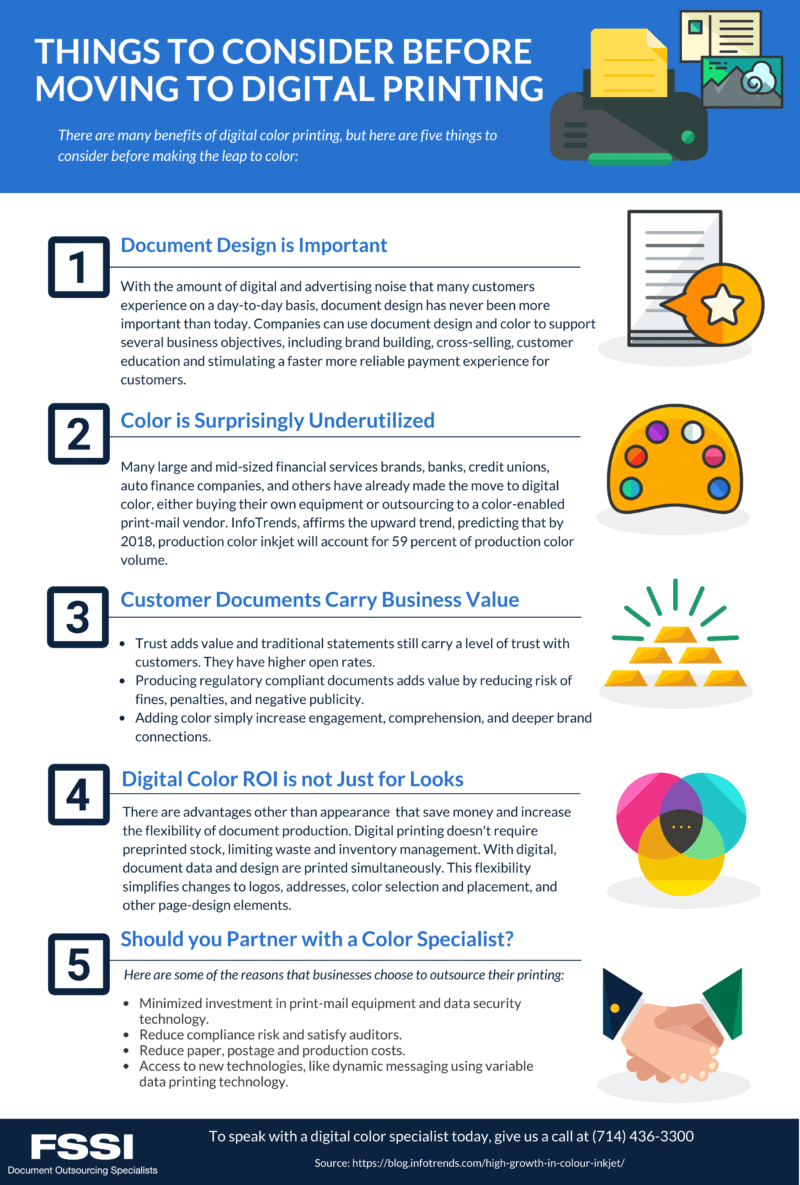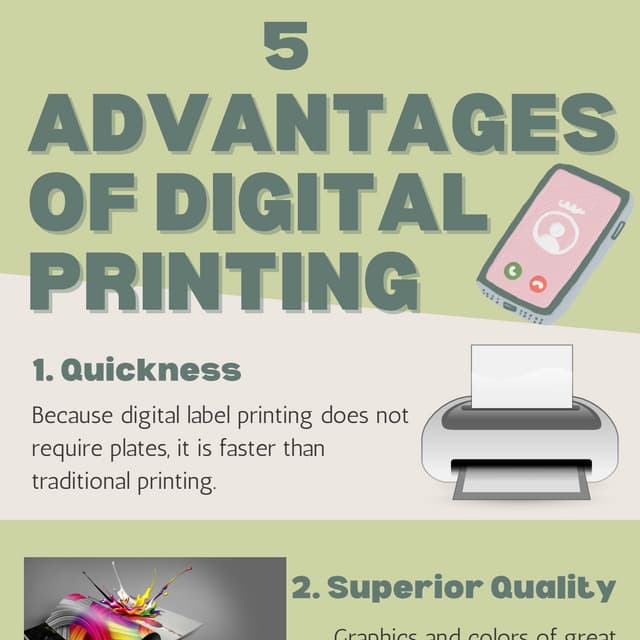An Unbiased View of Digital Printing
Table of ContentsGet This Report on Digital Printing9 Easy Facts About Digital Printing ExplainedGetting The Digital Printing To WorkMore About Digital PrintingSome Known Details About Digital Printing Everything about Digital PrintingDigital Printing Fundamentals Explained
According to PMMI, electronic printing permits brands and producers to respond quickly to customer demands while enhancing the supply chain, lowering warehousing price and waste, and appreciating faster time to market. That all audios wonderful, but exactly how does this innovation do all that? The major differentiator of these innovations is that there are no set up costs and no plates with digital printing.According to Wikipedia, the biggest distinction between digital printing and conventional approaches such as lithography, flexography, gravure, or letterpress is that there is no demand to change printing plates in electronic printing, whereas in these analog printing approaches home plates are repetitively changed. This causes quicker turn-around time and reduces expense when using digital printing.

The 9-Minute Rule for Digital Printing
Much more inventory can mean even more waste down the road. With conventional printing approaches, short-run printing is simply not feasible. Since a terrific design can make or damage your item, digital printing consistently develops high-grade, clear and vivid graphics each time. Digital printing on flexible bags includes the brilliant, vibrant, and specific graphics that virtually bid customers to connect and touch them.
Digital printing is the process of printing digital-based photos directly onto a range of media substrates. There is no requirement for a printing plate, unlike with countered printing. Digital documents such as PDFs or desktop posting files can be sent out straight to the digital printing machine to print theoretically, photo paper, canvas, material, synthetics, cardstock and various other substrates.
Digital printing is quicker and efficient in even more information, two reasons it's often utilized to print packaging, straight marketing leaflets, and publications or magazines. Many digital printing presses have traditionally made use of toner-based innovation and as that technology quickly progressed, the print top quality matched that of balanced out presses. In current years, inkjet modern technology has actually simplified digital print accessibility as well as the expense, rate and top quality challenges facing print providers today.
What Does Digital Printing Do?
Countered printing is the ideal service when you need and/or flexible colour, paper and sizing alternatives. Digital Printing. Digital printing is ideal for tasks, usually less than 2,000 copies, and when you need a quick turnaround. If you are not certain what's finest for your job, we will function with you to choose the print approach finest fit to your project and spending plan.
Digital printing allows for fast and affordable manufacturing without compromising top quality, unlike balanced out printing. Electronic printing, with its excellent color precision and uniformity, is a game-changer in the market.
While both have their values, there are several crucial distinctions that set them apart. Understanding these distinctions can aid you make an educated choice concerning which method is finest matched for your printing requires. Offset printing has actually long been the best choice for high-volume commercial printing. It includes moving ink from plates to rubber blankets before lastly applying it onto the paper.
The Of Digital Printing
One significant advantage of offset printing presses is their capability to deal with a wide variety of paper sizes and densities. The countered press can accommodate different materials, including shiny or distinctive papers, giving versatility that electronic printers might struggle to match. This printing method depends on using printing plates to move the ink onto the paper, making it a preferred option for premium prints.
Adjustments might be required throughout the print run to keep high quality uniformity with printing presses. Digital printing, on the other hand, uses a much more structured method contrasted to offset press.

Let's delve into these benefits and check out just how they can benefit businesses. One substantial advantage of electronic printing is the elimination of expensive setup charges that are related to countered printing. In typical offset printing, each work needs the production of plates, which can be expensive and taxing. With digital innovation, there is no demand for plates or complex configuration procedures.
How Digital Printing can Save You Time, Stress, and Money.
One more cost-saving element of digital printing is the capability to publish just what you need. Unlike offset printing, where big quantities must be created to make the process economically practical, digital printers provide greater my blog flexibility. Whether you need a little batch or a single duplicate, electronic modern technology makes it possible for on-demand printing with no extra expenses.
Making use of typical countered visit their website printing would require creating a large quantity upfront to attain an acceptable unit expense per leaflet. By deciding for digital printing instead, they can publish just the exact number required at a lower overall cost.: A marketing firm wants to run a straight mail campaign targeting various customer sectors with tailored pamphlets.
Among the essential advantages of digital printing for small print runs is its. Unlike offset printing, which needs the production of plates and configuration time for each task, electronic printers can start producing prints nearly instantaneously. This makes them perfect for smaller sized quantities where time is essential.
Not known Incorrect Statements About Digital Printing
One more benefit of electronic printing is its capacity to create individualized advertising and marketing materials. With, services can conveniently include individualized material within each published item. This permits targeted messaging that resonates with different sections of their audience. A business running a direct mail project can individualize each postcard or brochure based on recipient choices or demographics.

Among the crucial advantages is the boosted adaptability and customization options that include digital printing. With digital printing, making changes to designs or content during the production process is a wind. Unlike conventional offset printing, where making modifications can be time-consuming and costly, digital technology enables fast and very easy changes.
An additional benefit of digital printing is its variable data abilities. This feature enables customized content to be printed on a mass range without giving up performance or high quality. Whether you require to tailor each item with private names, addresses, or other distinct information, variable data printing makes it feasible. This degree of personalization can considerably improve customer engagement and feedback prices.
What Does Digital Printing Mean?
Whether you're looking for glossy or matte surfaces, distinctive documents, or specialty stocks, digital printers can accommodate different choices. Digital printing absolutely shines.